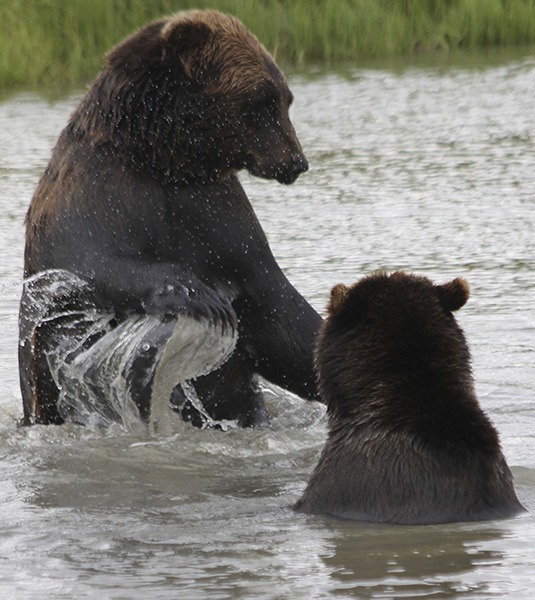I wanted to see bears. I am fascinated and terrified by these kings of the forest. As an avid backpacker I have often worried that one would rip through my tent and maul me to shreds. Yet on a recent trip to Alaska I found myself on a mission to not only glimpse a bear, but actually to seek one out.
Let me start at the beginning.
Like many adventures in my life, it all began with an email from my friend Dan Morrison.
“You have to come to Alaska,” he wrote. And, just like the time he asked if I wanted to work as an embedded journalist in Afghanistan, I replied, “yes.”
Morrison, along with three instructors and 19 journalism students from the University of Oregon, has spent the better part of the month in Cordova, Alaska to report on various researchers who study climate change. For Senior Instructor Mark Blaine, the class is designed to help students hone their skills as reporters in order to make science appealing and accessible to readers.
“The most powerful thing about storytelling is to show, not tell, and to have you reader figure it out … it’s that sense of discovery that is powerful,” said Blaine.
The idea to come to Cordova to document these environmental issues was inspired by the fact that an earthquake struck the area in 1964. The Copper River rose eight feet in three minutes and the 70,000 acres of the Copper River Delta was formed, creating a unique landscape for scientists to explore.
“It’s an incredibly unique ecosystem,” Morrison told me.
The waters around Cordova are called Prince William Sound, which is known for the Exxon Valdez spill of approximately 10.8 million gallons of crude oil.
The waters around Cordova are also known for their population of sea otters.
The animals were nearly brought to extinction in the late 1800s, but their population has recovered, making it one of the happier stories in the animal kingdom. According to those at the Orca Adventure Lodge in Cordova, there are an estimated 12,000 sea otters within 25 miles of their building located near town.
The students started their education adventure by attending a research class in the spring. During the summer they are in Alaska to shoot video and photographs and report their findings. In the fall they will each enroll in a production course. The hope is to continue the project for three years.
So, with the call of the wild – and Morrison’s email – I packed my bags and joined him and the students for a week to see what Cordova is all about.
When I first arrived I was surprised to find views so similar to the San Juan Islands with archipelagos and the sea rippling against rocky shores. Eagles soared overhead, and seagulls fought for the best piece of stinking fish. The only difference between Alaska and the San Juans is that bears and moose roam these shores and forests.
Situated in the southeastern end of Prince William Sound, the Alaskan City of Cordova has a population of 2,316. According to its website, the city was home to the Alutiiq and migrating Athabascan and Tlingit Natives who call themselves Eyaks. While perusing the website I couldn’t help notice the first item on the main page: “Be Bear Aware.”
During my trip I spent most days in search of a bear. After convincing a forest service employee to take me on a hike, I finally had a bear encounter – although it was not what I expected. We walked in the woods soaked in mid-July storms with my camera safely tucked under my raincoat, my fingers itchy for action and my eyes searching every tree for bears. This was before I purchased “Alaska Bear Tales,” which details hundred of gruesome stories about skull-cracking teeth and people buried alive by cinnamon-colored paws.
After walking for only a mile or so, a strange sound entered our ears. It was a prehistoric sound, the roar of a T-rex. Then another creature let out a noise, and the two beasts were roaring in tandem somewhere in the woods, somewhere nearby. All of a sudden the search for bears felt wrong. It was another misguided, over exuberant adventure that would leave me with regrets. As it turns out I never actually saw any bears and had to get my Ursus arctos fix at a wildlife sanctuary in Anchorage where the bears were safely swimming and eating grass behind an electric fence.
In the days after I left, the students had sunny skies and many bear encounters, which they called thrilling.
Morrison summed it up best in an email he sent me.
“They [the students] had to hike up a river basin but were then surrounded by eight bears,” he wrote. “I had to pay $165 in gas but it was worth it.”



